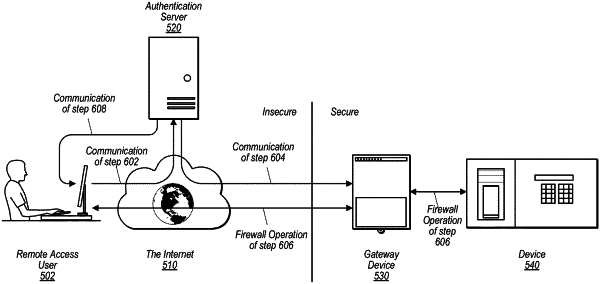| CPC H04L 63/08 (2013.01) [H04L 12/66 (2013.01); H04L 61/25 (2013.01); H04L 67/141 (2013.01); H04L 67/143 (2013.01); H04L 69/28 (2013.01)] | 20 Claims |

|
17. A method for establishing communication between at least one premise device and an authenticated remote user, comprising:
by a security device:
receiving one or more messages from an authentication server to establish a remote access session between a device associated with the authenticated remote user and the at least one premise device coupled to the security device, wherein the one or more messages indicate an origination address of the device associated with the authenticated remote user, wherein the at least one premise device is configured with functionality to restrict access based on origination address;
in response to receiving the one or more messages from the authentication server, establishing communication with the device associated with the authenticated remote user, wherein said establishing communication is performed based on the origination address;
starting a timer which counts an amount of time that connections from the device associated with the authenticated remote user are allowed;
at a first time, enabling relaying of data between the at least one premise device and the device associated with the authenticated remote user while the timer is active, wherein relaying of data between the at least one premise device and the device associated with the authenticated remote user comprises communicating with the at least one premise device over a local area network and performing address translation such that the connection from the device associated with the authenticated remote user appears to the at least one premise device originate with the security device; and
at a second time, disabling relaying of data between the at least one premise device and the device associated with the authenticated remote user.
|